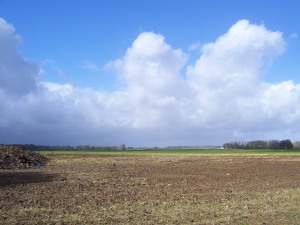The harvest is in and the nights are getting longer. Time to remember a day nearly 600 years past, in Agincourt – made famous for all time.
“The nights are drawing in and kings, queens, knights, yeomen, serfs and all look into the warmth of their homes rather than the cold outside. Yet think back to the 25th October 1415 and for a small band of English, Welsh, Irish and Scottish soldiers home was a long way away.”
~ Sir Gawain
The Battle of Agincourt, an important victory of the Hundred Years’ War, took place on St. Crispin’s Day, October 25th, 1415.
King Henry and his men crossed the English Channel into France on a journey to Calais to get back disputed lands. He and his men were exhausted and cut off from supplies by the French. At dawn each side had set up near their respective camps. The battle lines were about a mile apart, and between them was a freshly plowed field of mud. A fascinating brief description of the battle strategy (including maps) can be found here.
The English were outnumbered and needed nothing short of a miracle.
“It had rained the night before. My fellow soldiers were cold and wet. The ground was muddy underfoot. I recall Sir Thomas Erpingham, the commander of the archers, wandering among this filthy soldiers, offering calm and reassuring words – his Norfolk burr whispering like a plane over elm.
I recall the king explaining to his lords the protocol of what to do should defeat occur. But I also recall him laughing in the face of adversity across the sodden field ahead of him. If we can be touched by the hand of God, then let that time be now. Within hours the French would overwhelm us – only prayers and fate could help us beneath the leaden skies of Picardy.”
~ Sir Gawain
“This story shall the good man teach his son;
And Crispin Crispian shall ne’er go by,
From this day to the ending of the world,
But we in it shall be remembered-
We few, we happy few, we band of brothers…” ~William Shakespeare, Henry V

“Not to us, O Lord, but to your name be the Glory!”
“Yet so it was that Henry gave the instruction for our pitiful band to advance. Fortune favours the brave.” ~ Sir Gawain
“For England, Harry and St. George” ranks with Trafalgar and Waterloo in the annals of English wars. Henry returned to London to a hero’s welcome, married the French Queen Catherine and pretty much ended the 100 years’ war.
“When I think back to that fateful day all those years ago, I sometimes wonder what might have happened had things turned out against us. And yet they didn’t. And as our good bard William Shakespeare was to write so many years later, “gentlemen in England now a-bed shall think themselves accursed they were not here and hold their manhoods cheap whiles any speaks that fought with us upon Saint Crispin’s Day.”
~ Sir Gawain
My dear readers, for a vivid history lesson, you simply must read Sir Gawain’s account of The long road to Agincourt.
And…
Although Shakespeare wrote his play almost 200 years after the real events and some facts are inaccurate, he did capture the feeling of England and the historical significance, while keeping the royal character of King Henry intact.
Read more
Cry God For Harry, England, and Saint George – Unto the Breach!









